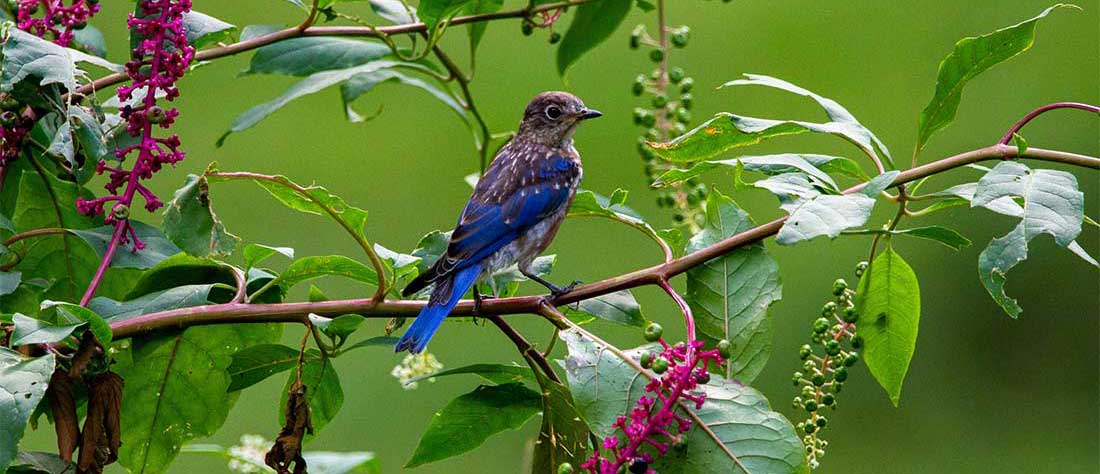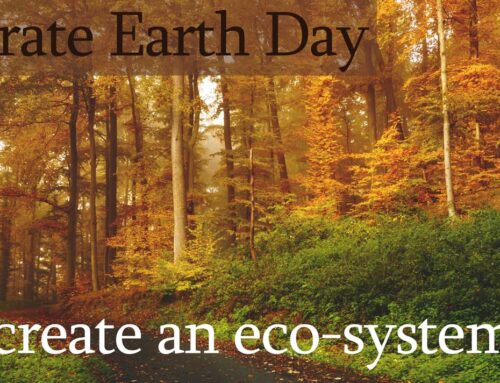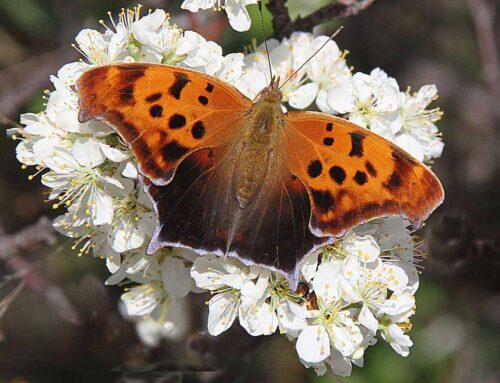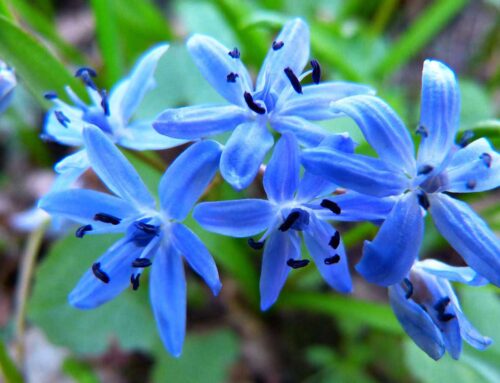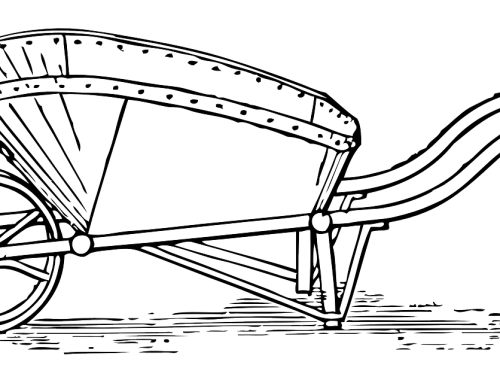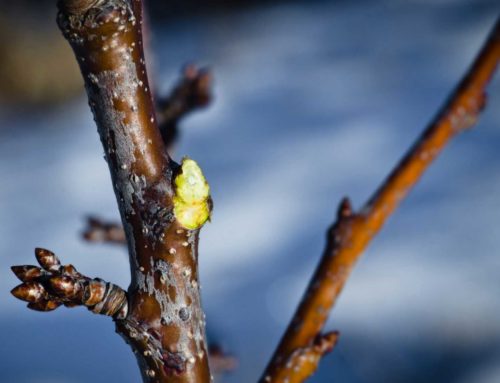Sustainable Landscaping for Wildlife
Organic Land Care in Bergen County
Eight Native Plants That Attract Bluebirds
I’ve always been fascinated with bluebirds. The bluebird is a longtime symbol of happiness, good health and hope in North America. Native Americans displayed the bird in their art and told tales of its beauty and humility in their folklore. The Eastern Bluebird (Sialia sialis) is a small, lively thrush with a rounded body, short beak and stumpy tail. Obviously, the easiest way to identify a bluebird is, you guessed it, their blue feathers! The male bluebirds are a striking, vibrant blue with a rust-colored red chest, while the female bluebirds are a earthy brown with slight tinges of blue and the same rust-colored red chest.
In the past, their numbers have declined seriously in many areas due to loss of habitat, urban development and loss of nesting sites. However, during recent years their numbers have been increasing again, undoubtedly helped by the planting of native shrubs providing habitat and by the building of birdhouses in many areas. Bluebirds have a large historical and cultural significance in the Eastern United States. They continue to play an important role in protecting crops from insects, ensuring a reliable food source for people. Farmers plant bluebird boxes around agricultural fields to feed on insects that can otherwise destroy crops.
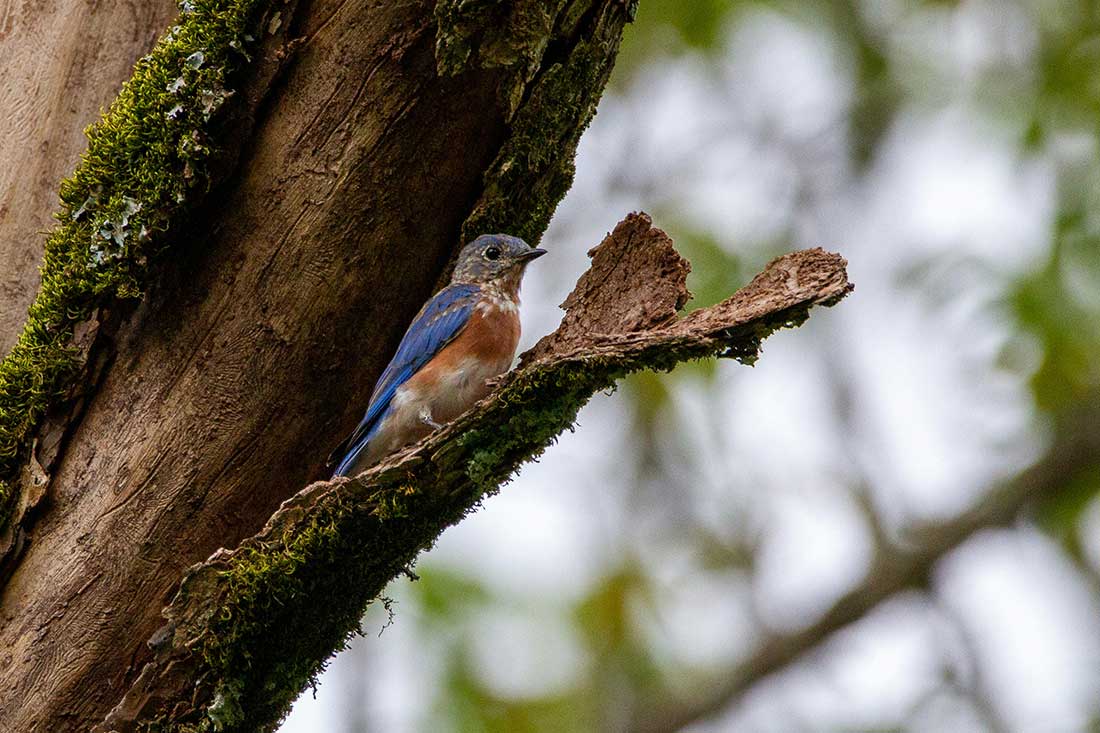
A bluebird’s favorite springtime snack is small insects and invertebrates, such as beetles, crickets, grasshoppers, worms, snails, and more. However, insects comprise only 2/3 of their diet, with the remaining coming from fruit, berries, and seeds. Eastern bluebirds eat fruits, including those of fruit of blackberry, elderberry, honeysuckle, dogwood, raspberry, mountain ash, pokeweed, Bradford pear, wild grapes and many other plants. In the fall they find berries of black gum, buckthorn, Eastern red cedar, Virginia creeper, and other trees and shrubs.
Many bluebirds remain all winter, surviving on American holly, chokeberry, winterberry, wild black currant, and other berries that remain throughout the winter months. Understanding the potential impact of environmental changes on the Eastern Bluebird is crucial for conservation efforts and protecting their habitats in the face of these changing environmental conditions. As climate change alters temperature and weather patterns, Eastern Bluebirds may need to adapt their range to ensure survival. Shifts in thermal conditions and food availability may prompt bluebirds to migrate to areas with more favorable climates.
Here are eight native shrubs and plants that attract bluebirds. Adding these plants to your yard’s landscape will provide an attractive food source for bluebirds as well as areas of natural habitat, enticing them to remain and increase in numbers.
Bluebirds benefit from a water source for drinking and bathing.
Although bluebirds get most of the water they need from the foods they eat, they will drink from bird baths. Bathing in a bird bath helps keep their feathers clean and keeps them cool in hot weather. Bluebirds will bathe and drink in bird baths, recirculating streams, or pond edges as long as the water is not too deep.
Provide a natural habitat – leave dead wood.
Despite our tendency to keep backyards clean and organized, nature prefers some disorder. If possible, leave dying or dead trees as a source of habitat for bluebirds. One of the most limiting factors for bluebirds is nesting cavities, leave dead trees and branches, as long as it is safe to do so. Other bird species may create spaces and nests for bluebirds, too. Woodpeckers will create new cavities that may be used in subsequent years by bluebirds for nesting. Another benefit of not removing all of the old branches is that they provide a hunting perch for bluebirds.
Keep Bluebird Nesting Material Nearby
Bluebirds need certain materials to create their nests. Bluebirds build their nests from pine needles and grasses. They sometimes line the nest with fine grasses, hair, and feathers. If pine trees and grasses aren’t around the area, you can leave pine straw or garden straw stuffed in a suet holder during nesting season in your region.
Build A Bluebird House
Bluebirds use a birdhouse during the nesting season in late winter and early spring (depending on region). Bluebirds are cavity nesters, so building a bird box and putting it up in your yard will attract them during the nesting season. Make sure it’s well-designed and meets their nesting needs to encourage them to take up residence. Proper box design, construction, mounting, and maintenance is critical. Due to habitat loss, a lot of the success in the recovery of bluebirds is due to placing artificial nest boxes in the appropriate habitat.
Bluebird Nesting Box Plans
To help you get started here is a link to North American Bluebird Society’s page with pdf document providing details and instructions on the procedure to build a bluebird nesting box.
In retrospect:
Treat the earth well: it was not given to you by your parents, it was loaned to you by your children. We do not inherit the Earth from our Ancestors, we borrow it from our Children. To have a better understanding of life, to be a better conservationist, scientist, citizen – or even a better person – go outside and connect with nature. Who knows, maybe a lucky bluebird will brighten your day.
At Lincoln Landscaping cultivating the environment is our life and livelihood. It is our number one goal to help our clients create and maintain beautiful landscapes while reducing the impact on the environment. Whether you are interested in a pollinator landscape garden design and build, transition to an organic land care program, or other landscaping or property management project; we can create for you an environmentally friendly, organic, natural, and beautiful property.
Lincoln Landscaping Inc of Franklin Lakes
“creating eco-systems”
Lincoln Landscaping “The Natural Choice”
Mike Kolenut President & CEO
https://lincolnlandscapinginc.com
(201) 848-9699

